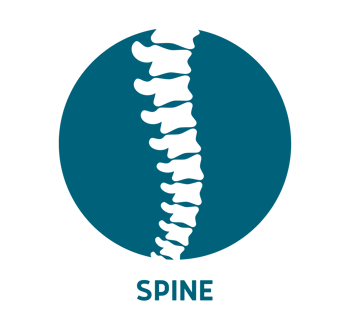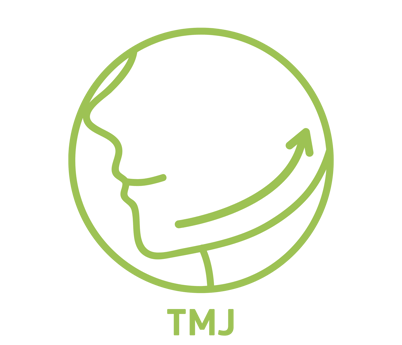Complete Chiropractic Care
Like most chiropractors, at Synergy Chiropractic, Dr. Thompson utilizes what is called a chiropractic adjustment, which involves manipulation of the spine and other joints.


About Chiropractic Care
Chiropractic is a healthcare profession in which the diagnosis, treatment and prevention of disorders of the neuromusculoskeletal system is the traditional focus. There is a wide variance amongst types of treatment and scope of chiropractic care from doctor to doctor. Some chiropractors only adjust bones in the spinal column, some mostly use muscle work or manual therapy, and some use special instrumentation and machinery for therapy that includes electrical and ultrasonic impulses. Chiropractic physcians also make use of conventional diagnostic tests, such as X-rays, MRIs, and specific laboratory analyses. Spinal and extremity manipulation is only a part of what we at Synergy Chiropractic do as part of an overall plan to manage your health. Other kinds of treatments you may see at a typical chiropractic clinic include:
Chiropactic Adjustments : The use of hand or special instrument to deliver a quick thrust to bones or other tissues in the body to restore balance and proper function. Chiropractic adjustments have been shown to be a safe and effective alternative treatment for pain and injury. Chiropractors perform 95% of all adjustments in the world to correct misalignments of the vertebrae in the spine and bones in the extremities.
Manual Therapy: Use of special intruments or hands to work on imbalances of the muscles of the spine and extremities.
Lifestyle and Nutritional Counseling: The use of quality nutriitonal supplements as well as healthy lifestyle choices as a vital part of allowing your body to heal itself. There are many things that effect our health that we cannot control, so its important to do what you can to keep your body in the best state that you can.
Stress Management: The identification of stressors in a patient's life and counsel on avoiding or removing these things from your life as well as education on certain stress relieving techniques that can be done to help alleviate them.
Therapeutic Exercise: Use of certain postions and motions to train and restore muscle balance. Often used to help hold adjustive work and prevent further subluxations from occuring.
Physical Rehabilitation: After restoring proper neurologic function to muscles this therapy is used to restore strength to affected muscles. It consists of excercises that isolate muscles that require increased tone or strength to restore balance.
In the field of chiropractic, there is more and more research being done on conditions that have been positively effected or resolved using the above techniques in conjuction with other lifestyle and nutritional considerations. It is commonly believed that chiropractic is a treatment for only spinal issues such as back pain or muscle pain, but that label is starting to be wear off as people are beginning to see just how benefical this treatment can be for a multitude of health complaints.
How We Are Different Than Most
At Synergy Chiropractic, we not only treat musculoskeletal conditions, but also work with disorders related to organs or body systems as well as mental/emotional issues that a patient may be suffering from.
Spine
Like most chiropractors, at Synergy Chiropractic, Dr. Thompson utilizes what is called a chiropractic "adjustment", which involves manipulation of the spine, other joints, and soft tissue. By doing so, she can reduce pain and restore neuromuscular function.
An adjustment involves a simple quick thrust to a bone or tissue, and is either performed by hand or instrument. The goal of any adjustment is to restore the bone to its natural, or original, position and increase certain restricted motions of the bone. The important thing to remember is that the act of the adjustment frees—not forces—a vertebra to allow it to restore its proper position and mobility. By restoring a bone to its normal position it provides positive neurologic feedback to the brain, and allows for proper motion to occur at the joint thereby inhibiting, or preventing, pain signals from being sent to the brain from the affected area. Not only does the actual joint that was manipulated change, but it can also effect surrounding joints as well in a positive way. An adjustment will also cause the muscles surrounding the joint and possibly the muscles innervated by nerves at that level of the spine or area of the body to reset and restore proper balance.
Chiropractors take many factors—including size, weight, and muscle structure—into consideration when deciding on which adjustment technique to use. Sometimes manual therapy or muscular massage are used prior to a spinal manipulation in order to relax the muscles in the affected area.
Adjustments have been shown to:
Increase blood flow
Increase pain tolerance levels
Increase range of motion
Increase the body's secretion of "good" chemicals, such as melatonin and endorphins
Reduce blood pressure
Reduce tension and muscle spasm
Adjustments can be performed while sitting, standing, or lying down. Some adjustments involve special instruments or tables. At Synergy Chiropractic, we occasionally use a "drop piece" where the table shifts slightly assisting the doctors manipulation force. We also use a manual adjusting tool commonly referred to as an Activator. It is a spring loaded handheld tool that delivers a small but quick thrust at a variable force. These tools are used only when the situation or patient warrants this type of treatment, but it is not used on every patient at every visit necessarily.
Some common adjustment techniques include:
Motion Palpation/Diversified : a manual technique the chiropractor uses to determine if your vertebrae are properly aligned by applying pressure in various directions through a joint, after which they will correct the misalignment via the proper direction of thrust.
Maignes Technique: a manual technique in which the patient lies face up on the table and the chiropractor gently rolls them over a hand contact underneath their back.
Lumbar Roll: a manual technique in which the chiropractor applies a firm, yet quick thrust with a pulling vector to a misaligned vertebra while the patient lies on his or her side.
Mobilization: a manual technique in which the chiropractor applies gentle pressure with the hands to separate or approximate the vertebrae or other bones.
Respiratory Adjustments: a gentle, manual technique in which the chiropractor applies pressure to a bone in a certain direction while the patient is either inhaling or exhaling.
Pelvic Blocking : a technique in which the chiropractor places soft blocks under the pelvis in certain ways to realign the hips. This technique is very gentle and there is often a light pumping thrust on a specific contact on the hip that assists the pelvic realignment.
Cranialsacral Therapy: another form of adjustment called craniosacral therapy, or "CST," involves exerting very mild pressure to the body's craniosacral system, while having the patient do certain respirations simultaneously. The craniosacral system is comprised of the cranium, which is composed of the skull, face and mouth, and the "sacrum," or tailbone as well as the membranes and cerebrospinal fluid that surround and protect the brain and spinal cord. This is similar to the respiratory adjustment mentioned earlier. CST has been shown to provide relief from chronic neck and back pain, scoliosis, brain and spinal cord injuries, migraines, chronic fatigue, nervous system disorders, jaw joint problems, and stress disorders. (Conditions such as aneurysm and intracranial hemorrhage are contraindicated for this kind of therapy)
Instrument Adjustments: the use of a spring-loaded device as an adjusting tool to correct a subluxation. This type of adjustment is used more with elderly or younger patients, or any patient needing less motion induced into their joint than is typically applied by hand. It is also a large part of the Total Body Modification technique.


Extremities
”Commonly, chiropractors will only perform adjustments to the spine and neglect to work on the extremities of the body. At Synergy Chiropractic, we have had extensive training in extremity adjusting and will treat the feet, ankles, knees, hips, hands, wrists, elbows, and shoulders if a patient is in need of it. It is important to manipulate these areas in order to restore normal motion not only to that joint, but throughout the body. Correcting extremity problems can reduce or elimiinate pain elsewhere in the body such as the back or neck. For example, if the foot isn't contacting the ground correctly while walking due to an imbalance in the foot, it can then negatively effect structures above it such as the knee, hip, back and so forth. In some cases pain in these above areas is completely resovled by working on the extremities only.”


TMJ
One area of the body that is very rarely treated by chiropractors, but can be very beneficial to the body is the temporomandibular joint or TMJ. The muscles of the TMJ attach to both the jaw and the bones of the skull, so they can be related to issues in either structure. Things such as headaches, popping/clicking of jaw when opening mouth, grinding teeth, and general pain in jaw, neck, and head can potentially be helped by treating the TMJ. At Synergy Chiropractic, we treat the TMJ by preforming various muscle therapies to the actual muscles of the TMJ along with chiropractic manipulation of the cervical spine. We rarely use adjustment techniques to the TMJ as it is a very sensitive and delicate joint.


Does it hurt?
A very common concern of new patients is the question of whether or not adjustments will cause pain or discomfort. The wide majority of adjustments administered do not involve any pain or discomfort. On the contrary most patients feel relief and find it to be a pleasurable experience. As can be observed in the picture above, even our youngest patients aren't concerned with getting adjusted. There are some patients that experience mild aching or soreness in their spinal joints or muscles post-adjustment, but it is not common. Also, if such discomfort does occur, it typically will only last for a short period of time. The cause of such discomfort is due to the breaking of fibrous adhesions surrounding the joint that was being manipulated, which formed due to its lack of normal motion. The adjustment frees the joint of these adhesions and restores proper motion and function to the area, but in the process there can be a mild inflammatory healing reaction to break down and remove the adhesion debri.
Chiropractic adjustments can leave you with a greater sense of well-being, a calming sensation, and most importantly put you on the road to a life without pain.The important thing for a patient to keep in mind is to try to remain relaxed, as stiffening up may impede the adjustment process. "Popping" sounds are sometimes heard during adjustments; these are usually pockets of gas being released from the joint fluid and are completely normal. The sound can also come from the freeing of restrictions/adhesions surrounding a joint that form when there is a lack of normal joint motion.


